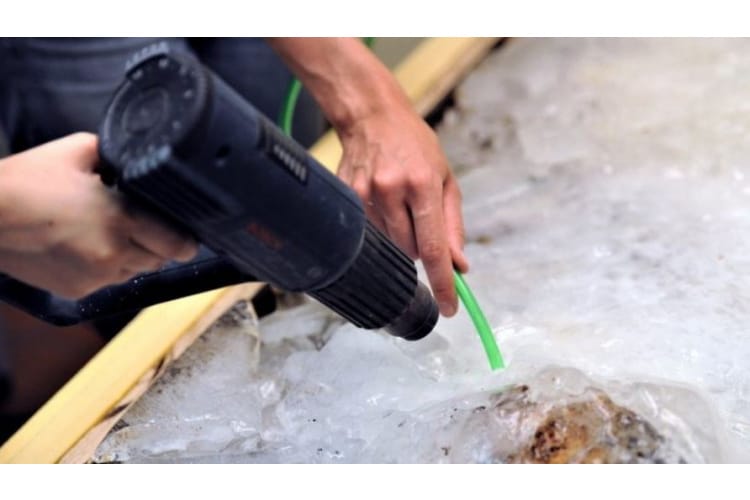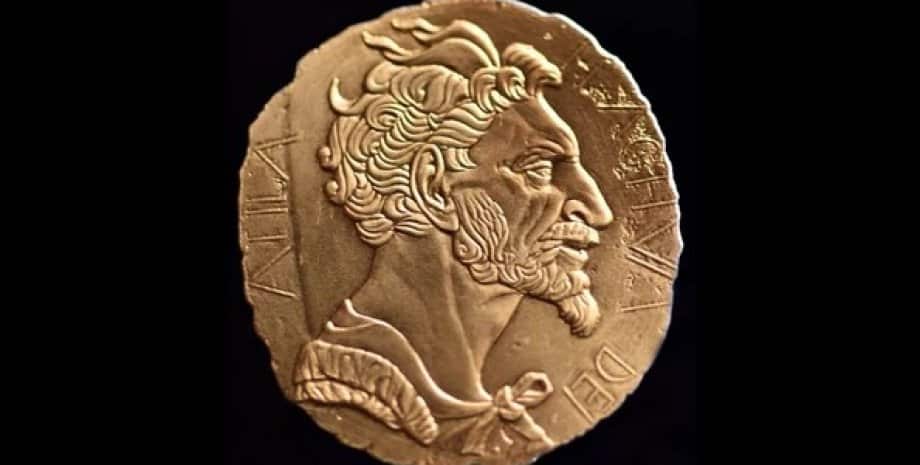In the laboratory of the Bavarian Monuments Authority in Bamberg, scientists have begun thawing a block of ice containing remains from an elite 6th-century burial. The block was specially created by archaeologists using liquid nitrogen in order to be able to fully study the burial.
The burial was found in October last year during excavations at the site of future construction in Tussenhausen. Archaeologists have discovered the remains of a Roman-era building that was reused in the early Middle Ages as a burial site for a boy. He was buried in a chamber grave with a brick floor and thick stone walls and ceiling. Rich accessories have been found on his skeletal remains. At the boy’s feet lay the skeleton of a dog. The presence of milk teeth indicates that the child was no more than 10 years old when he died, but despite his tender age, he was well armed. A sword and a belt for weapons, decorated with gold rivets, indicate that the boy belonged to the local elite. Silver bracelets, spurs, gold leaf crosses and a bronze vessel were also found in the grave.
The stone walls and ceiling of the tomb were so tightly connected that no soil deposits penetrated inside for 1300 years. Thanks to this, the burial was preserved in excellent condition, the remains of organic materials, including leather and fabric, were visible in it. However, this luck became a problem for the restorers because the remains were not encased in relatively stable soil, which could be cut into a block of soil for laboratory excavation to be able to preserve even the smallest traces of archaeological material, as modern archaeologists usually do. Without soil filler, the precious, fragile remains could have been damaged in transit.
To preserve materials with minimal wear and tear, archaeologists have developed a new technique. The stone walls of the tomb were removed and replaced with wooden panels. Another panel was placed under the grave above the brick floor. The surface of the remains was flooded with water and layer by layer the water was frozen with liquid nitrogen. The liquid nitrogen temperature ensures that the water instantly solidifies and turns into ice without expanding as it does when frozen at a higher temperature. Then the soil around the burial was cut with heavy equipment, and an ice block weighing about 800 kilograms was lifted with a crane. The whole process took 14 hours.
The frozen burial was transported to the laboratory, and now scientists have begun controlled thawing. “The block with the child’s skeleton was kept in the freezer for several months. Now the nickname of our little “Ice Prince” will soon become obsolete. His protective ice armor is carefully and consistently destroyed by targeted heating. Our team of restorers carefully prepared this process,” explains the general curator, Prof. Mathias Pfeil, head of the Bavarian Monument Protection Authority.
Defrosting is carried out in a special room with controlled humidity. So that the escaping condensate does not damage the finds, it is drained using a special suction device. During breaks in processing, the cooling hood ensures a constant temperature of -4°C. The thaw is expected to take several days. After that, experts, in particular anthropologists and archaeobotanists, will analyze the first samples of the material. “Numerous remnants of fabric and leather have been preserved, for example, from scabbards, sword belts and clothes. They promise an extremely interesting introduction to grave decoration and early medieval textile technology,” says Britt Nowak-Böck, Head of the Archaeological Restoration Workshops of the Monuments Conservation Authority.
Photo: Controlled defrosting of the Bayerischen Landesamtes für Denkmalpflege ice block














